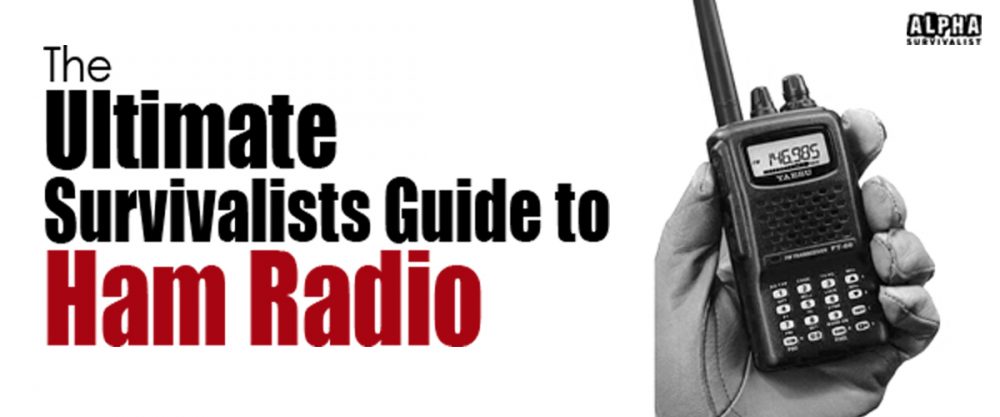Do you have a plan in place to stay in touch in a real emergency?
A genuine SHTF-style situation is going to do much more than knock out cell towers! Imagine that almost every way of communicating that you take for granted goes out.
What are you going to rely on?
Amateur radio services give you the freedom to communicate over long distances no matter what happens. You’ve probably heard this referred to as ham radio, but you might not know a whole lot about it.
The good news is that it’s easier than ever to get involved with ham radio as there are clubs and societies in almost every region. If you want to prepare for the worst, then all it takes is an absolute bare minimum of equipment and a little knowledge about how radio works to get started.
More than likely, you’re groaning to yourself right about now with regards to a potentially steep learning curve, but literally, the material in the next section is all you’ll ever have to know, although more knowledge is certainly better.
There’s absolutely no reason at all why preppers need to fear radio theory. It’s quite simple, and once you’ve got it down it’ll become obvious why ham radio is by far the best emergency radio communication method for staying in touch during the worst situations.
What do People Mean when they Talk about Bands and Frequencies?
Radio is one small part of the larger electromagnetic spectrum. Cellular phones, television signals, and Wi-Fi Internet devices all use different parts of this spectrum to put out messages.
On one end is the electricity that runs through your walls and on the other is sunlight. Ham radio frequencies are somewhere between these two extremes.
If you’ve ever taken a look at a piece of ham radio gear, then you might see a cryptic number like 146.520 MHz on the display screen. This is called a frequency.
It measures how fast the radio’s signals are vibrating in terms of measurement called megahertz. When two ham radio stations want to talk to each other, they usually have to be on the same frequency.
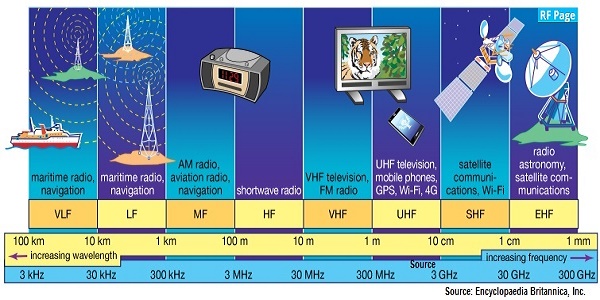
Radio waves are invisible without a special scope, but if you could see them you’d notice big peaks and valleys. The distance between them is called a wavelength.
Unfortunately, these same engineers have decided to use metrics for wavelengths! As a result, you’ll usually hear hams talk about two meters or 70 centimeters as the names of various bands.
They’ve also grouped bands into different areas of the electromagnetic spectrum. You’ll come across high frequencies (HF), very high frequencies (VHF), ultra-high frequencies (UHF), and even super-high frequencies (SHF).
When you’re dealing with higher frequencies, you’re going to be working with shorter antennas and lighter gear. That’s why VHF and UHF radios are generally the best choices for survivalists.
Take a deep breath! That’s all the theory you’ll ever have to learn.
Passing the license exam isn’t that much harder, either. In fact, the truth is you might not even have to do it, although we would certainly advise you to.
Earning a Ham Radio License
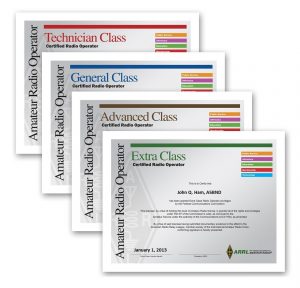
While this is technically true, you probably won’t have to do much to get one.
There used to be many different licenses classes, but new hams today are assigned to one of the following three classes:
- Technician
- General
- Amateur Extra
Those who want to be General or Extra class hams have to take additional tests, which might sound like a hindrance but the more qualified you are the better you will be able to work the airwaves. However, survivalists who aren’t interested in all the hobbyist stuff can feel free to ignore them!
Technician licenses give you privileges on a majority of the spectrum assigned to the ham service, including the ones used to communicate after disasters.
All you have to do to get one is pass a simple 35 question test. Due to certain regulations, the question pool has to be published so you can study it. There are even a few places on the web that let you practice before you sit down to take it.
This makes the whole issue of a test a formality at best. It’s easier than getting a driver’s license.
Say you don’t want to go through all that trouble, though. There are still ways to stock up on equipment without ever having to sit at a volunteer examiner’s table.
Legally Owning Ham Radio Gear without a License
Technically, you don’t have to be an amateur radio operator to buy a piece of ham gear. Preppers were able to buy transceivers out of magazines for years, and it’s now easy to find both new and used equipment online from numerous discount sources.
The FCC doesn’t check who buys it because there’s never been a law about who can purchase this equipment.
Authorities are only concerned about who transmits with it. If you own a transceiver and only use it to listen, then you’re not breaking any law.
In case of a serious emergency, anyone is theoretically allowed to use any frequency they need to to get help. Some people have occasionally used police radios and other pieces of fancy equipment to contact first responders in really sticky situations.
FCC officials normally define a dire emergency as an immediate threat to life or property. Legal speak doesn’t mean much when a crisis shows up anyway.
In an apocalyptic scenario, wouldn’t the federal government have more important things to worry about than a couple of buddies using ham rigs without a license? It’s doubtful that anyone would really care in that kind of situation.
However, we would always advise getting a license as it is the only way to practice for a real situation. Taking the time to learn how to use your radio correctly and talking to people right now will help you hone your skills for the day when they’ll really be needed.
Do You Still Need to Learn Morse Code?
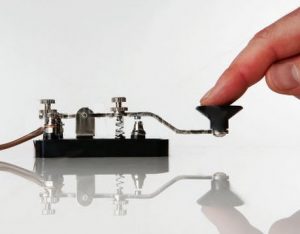
There’s no reason to subject yourself to it any longer if you don’t want to.
Before you completely tune out the idea, at least give some thought to at least practicing code at some point in the future. Morse is an extremely efficient way of communicating that can carry over long distances even if you don’t have much power or even a good antenna.
This makes it perfect for serious survival situations.
In fact, you can transmit code with nothing more than a signal mirror worn around your neck. This has made it popular with wilderness guides and urban explorers.
If you were ever incapacitated in an emergency, then you could even communicate using Morse code by squeezing another person’s hand!
Once again, the best way to practice is by actually having conversations on the air. However, there are many online resources you can now use to practice code if you wanted.
Other Uses for Ham Radio Gear
Those who have absolutely no interest in practicing or using their equipment outside of the most severe emergency can still find quite a bit to do with it. In fact, some pieces of gear have special features that make them more useful than other types of radios in these situations.
For instance, you can listen to standard AM and FM broadcasts with certain ham receivers. Unlike standard stereo equipment, ham radio gear is extremely sensitive and therefore able to pick up transmissions from further away than you might be used to.
You could use this feature to listen to National Weather Service bulletins if all your local broadcasters lost power.
Most receivers that work with the popular 2-meter band can receive special alerts from the National Oceanic and Atmospheric Administration (NOAA) as well. Small handheld radios in this category can even listen in on police and fire department activity, which is unbelievably useful in an emergency when government authorities are blocking out the press.
Speaking of the press, some rigs can also let you in on news broadcasts you’d never get from the mainstream media. World band stations, also called shortwave broadcasters, use frequencies in the HF bands so they can get messages out to people all over the world.
Schedules are available online that can tell you who is broadcasting and when. You might want to keep an updated copy of these somewhere just in case something happens.
You can also find radios that allow you to listen in on aircraft transmissions and other signals, which are all useful in an emergency.
In fact, some hardcore survivalists have elected to found special corps designed to facilitate communication when something bad happens.
Radio Positions for Survivalists
Preppers have made two different corps, and both of them are opened to anyone with a license. If you want to make sure that you’d have buddies in an emergency, then either of them is worth looking into.
Amateur Radio Emergency Service (ARES) is run by the American Radio Relay League (ARRL). Local emergency coordinators are located across the country, and they put together lists of names of people who have at least some background in survival.
In a serious situation, these people get called up. In the gravest events, nobody less than the president can activate an old law that sends Radio Amateur Civil Emergency Service (RACES) into effect.
If you’re a RACES operator, then you’ll be one of the only people allowed to communicate for the duration of the emergency. Those who are serious about being prepared for doomsday and stick together with like-minded individuals who also have the same kind of gear as they do.
That of course prompts the question as to what kind of equipment you need. Surprisingly, you won’t have to break the bank to put together your station.
What’s the Best Kind of Ham Radio Equipment for Preppers?
Experienced hams will tell you that the real action is all on HF and that you should have what they refer to as an 80 meter or 10-meter radio. While this might be true from a hobbyist’s perspective, VHF and UHF equipment are much more effective in an emergency.
Unless you want to chat with people all over the world, most of your needs can be satisfied by a handitalkie (HT). These handheld ham radios look like traditional FRS and GMRS two-way radios and work just like a walkie-talkie.
The big difference is that ham radio vendors have packed dozens of features into their latest gear. Some hams refer to these as a ‘shack on a belt’ because they include all of the features of a more sophisticated ham radio base station into a size that’s easy to carry.
You could also opt for the best of both worlds with ham radio for your car, more powerful than a handheld but with even greater mobility.
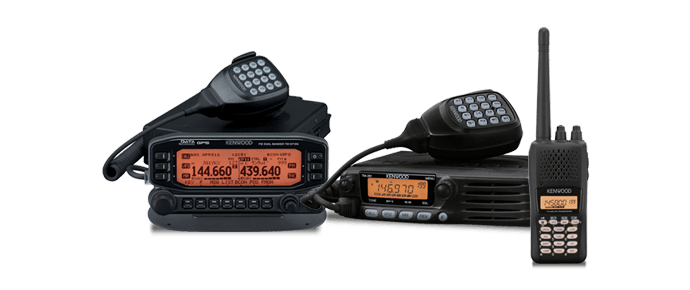
If you can only pick one single band, then go with two meters and make sure that your radio works with the so-called FM mode. Don’t confuse this for the FM band on a car stereo.
While they use the same technology, in theory, these radios transmit on much higher frequencies. They’ve become widely popular with hams, which means there’s a ton of existing infrastructure out there to support them.
The second most popular band is 70 cm, which is sometimes called 440 because the 440 MHz frequency exists inside of it. You can often find dual-band handhelds as well as mobile radios that offer both two meters and 70 cm.
Most survivalists would consider this setup to be pretty flexible for most uses. You’ll also have a fairly wide range of antenna choices at these frequencies as well.
As long as your radio has a standard jack, you should be able to find two-band antennas that can work fairly well at these frequencies. Depending on local circumstances, you might need a repeater to talk further, however.
How Repeaters Work to Extend Your Range
Some enterprising hams have installed powerful base stations at the tops of hills and buildings to provide coverage over a wide area.
These stations can listen on one frequency and simultaneously transmit everything they hear on another. Hence, they repeat all of the input they receive.
You can use a relatively low amount of power to talk to people over a huge range in this way. Many survivalist-minded repeater clubs have outfitted their equipment with solar panels and special generators so they’ll work even when line voltage goes down.
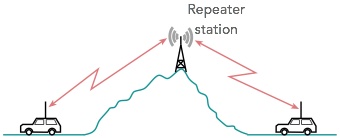
You don’t have to know anything about the math involved to use one. Simply tap in the repeater’s output frequency and then the offset number recorded next to it in any prepper’s repeater guide.
Once you key the transmitter, your radio will automatically handle switching back and forth for you.
Certain repeaters require a special sub-audible tone to use. This is done to prevent people from accidentally interfering with them.
If the repeater you want to use has the letters “PL” or “CTCSS” printed next to it in any standard frequency listing, then you need to transmit one of these tones.
Once again, there’s a ton of math involved that you don’t need to know. All you have to do is push the tone button on your rig and enter the digits that the listing reads.
Your radio will automatically handle the rest. Since repeaters regularly change frequencies and tone requirements, you’ll want to check online and make a list for yourself.
Make sure you do this well in advance of any emergency striking!
A majority of survivalists will never get an advanced license. If you ever decide to, then there are special repeaters on 10 meters that cover a huge amount of ground.
A Word About Weak-Signal Modes
There’s another voice technology called single-sideband (SSB) that you might have heard about, and it’s somewhat popular on two meters as well.
It’s not quite as beginner-friendly as FM, but it has a few big advantages that should prove pretty attractive to preppers. For one thing, it can pack a lot more punch into your transmissions even if you’re not putting out much in the way of power.
This can save your batteries if you are not able to charge them very often. As the name suggests, SSB and other so-called weak-signal modes can help you keep communicating even if you can barely hear each other.
There are some modes with esoteric names like ‘PSK31’ that allow you to hook your computer up to your radio and pass messages even when you’d never be able to hear another station.
Some groups are starting to put together activity nights, which provide a chance for people to practice using these modes. These are by no means necessary for survivalists to get involved with!
However, they are a great chance to practice your skills before the inevitable strikes.
Regardless of what kind of gear you decide to go with, you’ll want to give a little thought to the issue of penetration.
Signal Penetration vs. Range
Two-meter signals travel pretty far, but they’re not going to work as well if you’re stuck inside of a building.
This is because shorter signals can penetrate different materials a bit more easily. You might want to look at this as another reason to invest in a dual or tri-band rig.
When you find yourself inside a building, such as a shelter, you could switch over to the 440 band and then go back to two meters when you’re outside.
Being indoors is always a problem no matter what, though, so a good antenna is very important. If you’re working with HTs, then consider investing in a telescoping or springy antenna that works with all the bands you plan on using.
Most portable radios come with a two-to-four inch plastic-coated antenna. These are often referred to as rubber ducks because of their construction, and they’re not going to do you much good in an emergency.
Perhaps the most important thing to keep in mind, though, is that you can make do with whatever you have when the situation calls for it.
Last Words…
What we have covered here is basically all you need to know as a survivalist or prepper to be able to communicate effectively over considerable distances. Obviously the more you get into ham radio the more technical it becomes and the more gear there is to invest in.
It really is quite easy to get sucked into being a ham radio hobbyist which isn’t such a bad thing as it is a skill well worth having and honing.
However, most survivalists and preppers won’t consider speaking to people halfway round the world a necessity. What they will find important is having something they can rely on, something that provides them with emergency radio communication to coordinate over much greater distances than either FRS/GMRS radios or CB can offer, when networks are down and all other regular forms of telecommunication are unavailable.
This is exactly what ham radio offers, and why any prepper would be kidding themselves if they believed CB and consumer two-way radios could fill the void, especially in the long term.
Finally, if you’ve read through this post them I’m sure you’ll now realize that ham radio is the best option for emergency communication but before you rush out and start getting kitted out, remember this.
No one method of radio communication is of any use without power!
In other words…
Make sure you have the power angle covered, it would be shortsighted in the extreme not to have that box ticked.

